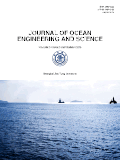
Journal of Ocean Engineering and Science
Scope & Guideline
Elevating ocean engineering to new horizons.
Introduction
Aims and Scopes
- Ocean Dynamics and Fluid Mechanics:
Research on the fundamental principles governing fluid motion in marine environments, including wave propagation, hydrodynamics, and fluid-structure interactions. - Numerical Modeling and Simulation:
Utilization of computational techniques and simulations to solve complex ocean engineering problems, particularly involving wave dynamics, ship design, and environmental impacts. - Wave Energy and Renewable Resources:
Investigation into the development and optimization of wave energy converters and other marine renewable energy technologies, focusing on efficiency and sustainability. - Marine Structures and Materials:
Study of the design, analysis, and performance of marine structures such as ships, offshore platforms, and underwater vehicles, including material properties and innovations. - Environmental Impacts and Mitigation:
Research addressing the effects of marine engineering activities on ocean ecosystems, pollution control, and the development of sustainable practices. - Mathematical Methods in Oceanography:
Application of advanced mathematical techniques, including fractional calculus and soliton theory, to model and analyze oceanographic phenomena.
Trending and Emerging
- AI and Machine Learning Applications:
An increasing number of studies are leveraging artificial intelligence and machine learning for predictive maintenance, ship performance optimization, and environmental monitoring, showcasing the integration of technology in ocean engineering. - Fractional Calculus in Modeling:
There is a growing trend in the application of fractional calculus to model complex oceanographic phenomena, enhancing the precision of simulations and analyses in various studies. - Environmental Sustainability and Climate Change Adaptation:
Research focusing on sustainable practices and adaptations to climate change is on the rise, reflecting a broader societal push for environmentally responsible engineering solutions. - Multi-Dimensional and Nonlinear Wave Dynamics:
Emerging studies are increasingly exploring multi-dimensional and nonlinear wave interactions, highlighting the complexities of ocean wave behavior and its implications for engineering applications. - Integrated Ocean Observation Systems:
There is a noticeable trend towards developing comprehensive ocean observation systems that combine various data sources and technologies for better monitoring and management of ocean resources.
Declining or Waning
- Traditional Ship Design Methods:
Research focused on conventional ship design principles has declined as the field gravitates towards more innovative, computational, and AI-driven design approaches. - Basic Hydrodynamic Studies:
While foundational hydrodynamic studies remain essential, there is a noticeable reduction in publications centered solely on basic principles, with a shift towards applied and complex modeling. - Static Analysis of Marine Structures:
There is a waning interest in static analysis methods, as dynamic and real-time analysis techniques gain traction in addressing the challenges of modern marine environments. - Local Environmental Studies:
Research focusing narrowly on localized environmental impacts is decreasing, as broader, integrative studies that consider global and system-level interactions become more prevalent. - Conventional Wave Prediction Models:
Traditional wave prediction models are being replaced by more sophisticated approaches employing machine learning and advanced statistical methods, leading to fewer publications in this area.
Similar Journals
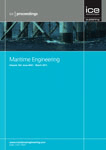
PROCEEDINGS OF THE INSTITUTION OF CIVIL ENGINEERS-MARITIME ENGINEERING
Pioneering Research in Ocean Engineering.PROCEEDINGS OF THE INSTITUTION OF CIVIL ENGINEERS-MARITIME ENGINEERING, published by Emerald Group Publishing Ltd, is a leading journal in the field of Maritime Engineering. With a reputable ISSN of 1741-7597 and an E-ISSN of 1751-7737, this journal has established itself as a cornerstone for researchers, professionals, and students keen to explore the complexities of ocean engineering. Operating primarily from the United Kingdom, it has made significant contributions to the advancement of the maritime industry since its inception, covering research from 2001 to 2024. The journal currently holds a Q3 ranking in Ocean Engineering as classified by Scopus, where it ranks 21st among 105 journals in the category, placing it in the 80th percentile, which highlights its influence and relevance in contemporary marine research. Through a rigorously peer-reviewed process, the journal publishes innovative and high-quality articles that encompass broad aspects of maritime engineering, including design, construction, and sustainability, thus serving as a vital resource for those engaged in this dynamic field. By fostering dialogue among professionals and providing access to cutting-edge research, the PROCEEDINGS OF THE INSTITUTION OF CIVIL ENGINEERS-MARITIME ENGINEERING continues to shape the future of maritime engineering practice and education.

Ocean Science
Illuminating the Past and Present of Our SeasOcean Science, published by COPERNICUS GESELLSCHAFT MBH, stands as a premier Open Access journal in the fields of Oceanography and Paleontology, with a commendable impact factor that highlights its influence in the scientific community. Since its inception in 2005, Ocean Science has provided a vital platform for the dissemination of innovative research and discoveries, boasting prestigious rankings of Q1 in both Oceanography and Paleontology categories as of 2023, along with impressive Scopus rankings (7th in Paleontology and 28th in Oceanography). Based in Göttingen, Germany, the journal's commitment to open access ensures that groundbreaking research is readily available to a global audience, fostering knowledge sharing and collaboration among academics, professionals, and students alike. As it converges towards its 20th anniversary in 2024, Ocean Science continues to be an essential resource for those dedicated to advancing our understanding of the marine environment and its geological history.
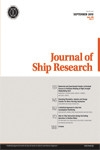
JOURNAL OF SHIP RESEARCH
Pioneering insights in ship research for a sustainable maritime industry.JOURNAL OF SHIP RESEARCH is a premier publication in the field of marine engineering and naval architecture, published by the Society of Naval Architects and Marine Engineers. With a focus on advancing the science and practice of ship design and construction, this journal has become a vital resource for researchers, professionals, and students alike. The journal spans a historical range since its inception in 1969 and provides critical insights and advancements in various related disciplines, highlighted by its strong quartile rankings in Applied Mathematics and Ocean Engineering as of 2023. Although not an open-access publication, it offers valuable research papers that are influential in shaping engineering practices and methodologies across the globe. With an ISSN of 0022-4502 and an E-ISSN of 1542-0604, the journal is available to a broad audience, providing essential knowledge that bridges theory and practical applications in the evolving maritime domain.
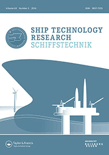
Ship Technology Research
Charting new waters in ship technology research.Ship Technology Research, published by Taylor & Francis Ltd, is a premier journal dedicated to advancing the field of ocean engineering. Established in 1995, this journal provides a critical platform for cutting-edge research, innovative methodologies, and the latest developments in ship technology. With a notable Q2 ranking in the Ocean Engineering category for 2023 and placing in the 70th percentile of Scopus rankings, the journal serves as an essential resource for professionals, researchers, and students aiming to enhance their knowledge and contribute to maritime advancements. The journal not only disseminates high-quality research but also encourages collaboration across disciplines, addressing the real-world challenges faced in ship design, operation, and technology. As a non-open access journal, it continues to uphold rigorous standards, ensuring that published work is both relevant and impactful in fostering innovation in the maritime industry.
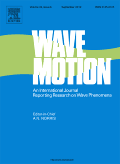
WAVE MOTION
Innovating Wave Studies for Tomorrow's DiscoveriesWAVE MOTION is a premier scholarly journal published by Elsevier, dedicated to the interdisciplinary study of wave phenomena across various scientific domains. With an ISSN of 0165-2125 and an E-ISSN of 1878-433X, this journal has been a significant contributor to the field since its inception in 1979, continuing to expand knowledge in Applied Mathematics, Computational Mathematics, Modeling and Simulation, and Physics and Astronomy. Located in the Netherlands, WAVE MOTION ranks impressively within the top quartiles (Q2) of its categories, showcasing its influence and relevance, as evidenced by its Scopus rankings: #133 in Applied Mathematics and #51 in Computational Mathematics, among others. Although the journal follows a subscription-based model, its commitment to high-quality research makes it a valuable resource for researchers, professionals, and students alike. As it approaches its convergence years through 2024, WAVE MOTION remains a critical platform for the dissemination of innovative findings and theoretical advancements in wave motion studies.

Indian Journal of Geo-Marine Sciences
Empowering Global Research in Marine SciencesThe Indian Journal of Geo-Marine Sciences, published by the NATIONAL INSTITUTE OF SCIENCE COMMUNICATION & INFORMATICS (NISCAIR), serves as a vital platform dedicated to the dissemination and advancement of knowledge in the field of marine and geosciences. As an open-access journal, it allows for improved visibility and accessibility of research findings to a global audience, enabling researchers, professionals, and students to share insights into oceanography and related disciplines. With a publication history spanning from 2007 to 2010 and continuing from 2012 to 2024, it has established itself within the academic community as a reliable source of innovative research, despite being classified in Q4 of Oceanography and holding a Scopus rank that places it in the 27th percentile. This journal is particularly relevant for those investigating marine ecosystems, geological oceanography, and their interconnections, thus playing an essential role in fostering understanding and communication within this important area of scientific inquiry.

Ocean Science Journal
Transforming Ocean Insights into ActionOcean Science Journal, published by the Korea Institute of Ocean Science and Technology (KIOST), is a pivotal resource for scholars and practitioners in the field of oceanography. With the ISSN 1738-5261 and E-ISSN 2005-7172, this journal presents cutting-edge research from 2006 to 2024, bridging fundamental and applied ocean sciences. Based in South Korea, with its headquarters located in Busan, the journal has achieved a commendable Scopus rank of #72 out of 145 in the domain of Earth and Planetary Sciences, placing it in the 50th percentile among peer publications. Classified in the Q3 category of the 2023 Oceanography rankings, Ocean Science Journal offers a platform for innovative studies that advance understanding of marine environments and promote sustainable ocean practices. While it does not operate under an open access model, readers and contributors can expect high-quality, peer-reviewed material that addresses pressing oceanic challenges and developments. This journal serves as an essential tool for researchers, professionals, and students committed to fostering marine science and ocean technology.

Journal of Marine Science and Technology-Taiwan
Navigating the frontiers of ocean research and engineering.The Journal of Marine Science and Technology-Taiwan, published by Nant Taiwan Ocean University, is a pivotal academic platform dedicated to the advancement of knowledge in the fields of marine science and engineering. With an ISSN of 1023-2796 and E-ISSN 2709-6998, this journal spans a wide array of topics relevant to the study and application of marine technology from 1998 to 2024. It ranks in the Q3 quartile in major categories such as Mechanical Engineering, Mechanics of Materials, and Ocean Engineering, illustrating its growing influence and the breadth of research it encompasses. Although currently not an open access journal, it provides critical insights to researchers, professionals, and students alike, making significant contributions to the understanding of marine environments and technologies. As the journal continues to evolve, its commitment to high-quality, impactful research remains central to its mission, empowering scholars to drive innovation in the dynamic field of marine science.
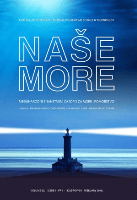
Nase More
Exploring the Depths of Water Science and TechnologyNase More is a prominent open-access journal dedicated to the fields of Ocean Engineering, Process Chemistry and Technology, Water Science and Technology, and Transportation. Published by the University of Dubrovnik, this journal has been disseminating valuable research since its inception in 1994, with a commitment to providing unrestricted access to scholarly work since 2003. The journal boasts a diverse range of submissions that contribute to the advancement of knowledge and innovation within its scope, making it an essential resource for researchers, professionals, and students alike. With a current impact factor reflected in its Category Quartiles as Q4 in Ocean Engineering, Q3 in Process Chemistry and Technology, and Q4 in related fields, Nase More is positioned to meet the evolving needs of its readership. Located in the picturesque city of Dubrovnik, Croatia, this journal not only serves as a platform for rigorous academic inquiry but also fosters collaboration and dialogue among experts in environmental science and engineering disciplines.

Journal of Naval Architecture and Marine Engineering
Advancing the Frontiers of Naval ArchitectureJournal of Naval Architecture and Marine Engineering is a distinguished open-access journal dedicated to advancing the field of marine engineering and naval architecture. Published by the ASSOCIATION OF NAVAL ARCHITECTS & MARINE ENGINEERING in Bangladesh, this journal has been a crucial platform for the dissemination of innovative research and practical applications since its transition to open access in 2007. With an impressive Q2 ranking in Ocean Engineering and a well-respected position within the Scopus rankings, it serves a vital role in connecting researchers and industry professionals. Covering a wide scope of topics from hydrodynamics to ship design and marine environmental protection, the journal invites contributions that enhance the knowledge and technology within the maritime sector. Accessed by a global audience, it is an essential resource for those seeking to make significant advancements in naval engineering.